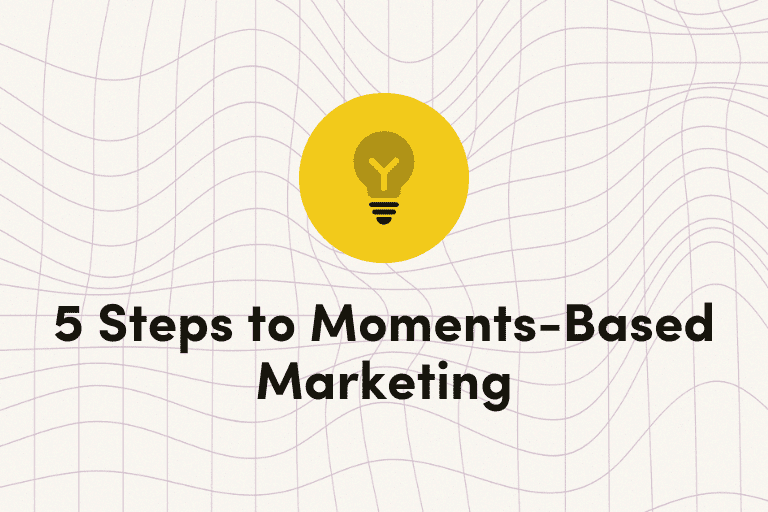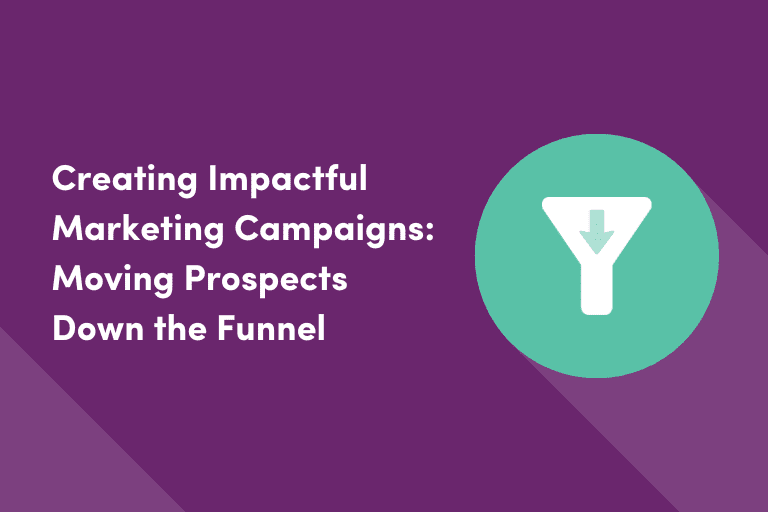Creating effective marketing campaigns is both an art and a science. A well-crafted campaign can not only elevate brand awareness but also address critical pain points for businesses, ultimately driving prospects down the marketing funnel and converting them into loyal customers. In this blog post, we’ll explore the key elements of successful marketing campaigns, the problems they solve, and how they strategically guide prospects through the funnel.
Understanding the Marketing Funnel
Before diving into the intricacies of campaign creation, let’s do a quick refresher of the marketing funnel. The funnel represents the customer journey from the initial awareness of a product or service to the final purchase and beyond. And, while there are a variety of versions, it’s generally comprised of several stages:
- Awareness: Prospects become aware of your brand or product.
- Interest: Prospects express interest in your offerings.
- Consideration: Prospects evaluate your product against competitors.
- Intent: Prospects show intent to purchase.
- Purchase: Prospects become customers by making a purchase.
- Loyalty: Customers become repeat buyers and brand advocates.
Effective marketing campaigns are designed to address each stage of the funnel, providing tailored content and experiences that resonate with prospects’ evolving needs and interests.
Identifying and Solving Key Problems with Marketing Campaigns
Marketing campaigns solve a variety of problems that businesses face. Here are some common challenges and how campaigns can address them:
- Low Brand Awareness: A well-executed awareness campaign can put your brand on the map. Utilizing channels like social media, SEO, content marketing, and influencer partnerships can help you reach a broader audience.
- Lack of Customer Engagement: Engagement campaigns, such as interactive content, webinars, and personalized emails, can captivate your audience’s attention and foster a deeper connection with your brand.
- Competitive Market: In a saturated market, differentiation is key. Campaigns that highlight your unique value proposition, such as customer testimonials and case studies, can sway prospects in your favor.
- Conversion Rate Optimization: If prospects are not converting, targeted campaigns focusing on retargeting, personalized offers, and user experience improvements can help nudge them towards a purchase.
- Customer Retention: Loyalty campaigns, including loyalty programs, exclusive discounts, and post-purchase follow-ups, can turn one-time buyers into repeat customers and brand advocates.
Creating Effective Marketing Campaigns
Now that we understand the problems marketing campaigns can solve, let’s delve into the steps to create impactful campaigns that guide prospects through the funnel.
1. Define Your Goals
Every campaign should start with clear, measurable goals. Whether it’s increasing brand awareness, generating leads, or boosting sales, having specific objectives will help you shape your strategy and measure success.
A good rule of thumb is to make sure these goals are “SMART:” Specific, Measurable, Achievable, Relevant, and Time-Bound. So, for example, instead of “generate leads,” your goal should be to “generate 300 leads by the end of the quarter.”
2. Know Your Audience
Understanding your target audience is crucial. Conduct thorough market research to identify your audience’s demographics, interests, pain points, and buying behavior. This knowledge will inform your messaging and channel selection.
3. Craft Compelling Messages
Your messaging should resonate with your audience’s needs and desires. Highlight the benefits of your product or service and address any objections they might have. Ensure your messages are consistent across all channels.
4. Choose the Right Channels
Select channels that align with your audience’s preferences and your campaign goals. For awareness campaigns, social media and content marketing might be ideal. For engagement and conversion, email marketing and retargeting ads could be more effective.
5. Create Engaging Content
Content is the backbone of any campaign. From blog posts and videos to infographics and podcasts, create diverse content that educates, entertains, and inspires your audience. Ensure your content is optimized for each channel and appropriately resonates with your audiences at each stage of the funnel.
6. Implement Personalization
Personalization can significantly enhance campaign effectiveness. Use prospect and customer data to segment your audiences to deliver tailored messages and offers. Personalized emails, product recommendations, and retargeting ads can drive higher engagement and conversions.
Remember that personalization will look different at the various funnel stages. At the awareness stage, for example, you may not have a ton of data to be able to personalize, so you’re casting a wider net. But, as you move down the funnel, you should be collecting more data so each message in the campaign can become more personalized.
7. Leverage Automation
Marketing automation tools can streamline your campaigns, ensuring timely and relevant communication with prospects. Automated email sequences, social media scheduling, and lead nurturing workflows can save time and improve efficiency.
8. Measure and Optimize
Continuous measurement and optimization are essential for campaign success. Use analytics tools to track key performance indicators (KPIs) such as engagement rates, conversion rates, and return on investment (ROI).
Your campaign is only as strong as the results you’re seeing. It’s important to know what’s working and what’s not and, perhaps most importantly, be ready to pivot. Analyze the data to identify what’s working and what needs improvement, and adjust your strategy accordingly.
Moving Prospects Down the Funnel
It’s one thing to design a campaign and understand how and where your campaign will be distributed, but campaigns also require a strategy when it comes to moving users down the funnel.
1. Awareness Stage
At the top of the funnel (TOFU), the goal is to attract and educate. TOFU content like blog posts, social media updates, and informational videos can increase brand visibility and attract a wide audience. Use SEO and paid advertising to amplify reach.
An example here is sharing a blog post via a social post.
2. Interest Stage
Once prospects are aware of your brand, it’s important to nurture their interest with engaging content. Offer valuable resources such as ebooks, webinars, and free trials. Email marketing campaigns can be particularly effective in keeping your brand top-of-mind.
Let’s say a prospect clicked on the blog post you shared in your social post. Now you have to stoke that flame of interest. Maybe on that blog post you have a sign up for your brand’s email newsletter.
3. Consideration Stage
In the consideration stage, prospects are evaluating their options. Provide detailed information about your products or services through case studies, customer testimonials, and product demos. Comparison guides and FAQs can also help address any concerns.
If someone signed up for your newsletter on that same blog post from the awareness stage. Now you know they’re in the consideration stage. Maybe you send them emails featuring content related to the blog post that initially captured their interest.
4. Intent Stage
To convert intent into action, offer incentives such as discounts, free shipping, or limited-time offers. Abandoned cart emails and retargeting ads can remind prospects of their interest and encourage them to complete their purchase.
If the prospect continues to open the links in the emails, pay attention to which links they’re opening. If they’re consistently interacting with your content, maybe reach out and offer a product demo.
5. Purchase Stage
Make the purchase process as smooth as possible. Provide a seamless checkout experience, multiple payment options, and exceptional customer service. Post-purchase follow-up emails can reinforce their decision and set the stage for future engagement.
If the prospect is engaged during the demo, be sure to follow up with answers to any questions they had, resources related to specific features they liked, and pricing.
6. Loyalty Stage
Building customer loyalty requires ongoing engagement. Implement loyalty programs, exclusive offers, and personalized communication to make customers feel valued. Encourage reviews and referrals to expand your brand’s reach through word-of-mouth.
If they do buy, it’s important to maintain that relationship. Ask for feedback on their experience or set up weekly check-ins with their CSMs to make sure they’re getting the most out of your product. Loyal customers make great advocates.
Be Flexible to Fuel the Funnel
Creating effective marketing campaigns involves understanding your audience, addressing key challenges, and strategically guiding prospects through the marketing funnel. By defining clear goals, crafting compelling messages, and leveraging the right channels and tools, you can create campaigns that not only solve business problems but also drive meaningful results.
Remember, continuous measurement and optimization are key to long-term success. Keep refining your approach, and your marketing campaigns will become powerful engines of growth for your business.
We’d be remiss if, in this TOFU content, we didn’t include a link to a demo. If you’re curious about Iterable and what we’re all about. Check out our other blog content or schedule a demo.
































